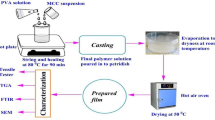Abstract
In this study, composites based on polyvinyl chloride (PVC), pulp fiber (PF), and wood flour (WF) were made by injection molding. The effects of two variable factors, namely the filler form and filler loading level, on the composite physical properties were examined. The result clearly showed that the major part of water absorption was due to water absorption of PF. It was found that the water absorption in the lignocellulosic material base composites is significantly higher than the neat PVC. Besides, the water absorption increased sharply with increasing cellulosic filler loadings in the composites. In case of hybrid composites, the rate of water uptake correlated with percentage weight of WF, lower WF (higher PF) loadings in composites exhibit higher rate of absorption. The higher onset of degradation temperature indicates the improved thermal stability of the samples. In other words, the result clearly illustrates that the thermal property of the composites increases after using PF and further increases after addition of WF.


Similar content being viewed by others
References
Xu Y, Wu Q, Lei Y, Yao F, Zhang Q (2008) Natural fiber reinforced poly(vinyl chloride) composites: effect of fiber type and impact modifier. J Polym Environ 16:250–257
Rowell RM (2005) Handbook of wood chemistry and wood composites. Taylor and Francis Group, Boca Raton, FL
Clemons C (2002) Wood–plastics composites in the United States: the interfacing of two industries. For Prod J 52:10–19
Ashori A (2010) Hybrid composites from waste materials. Polym Environ 18:65–70
Das S, Sara AK, Choudhury PK, Basak RK, Mitra BC, Todd T, Lang SJ (2000) Effect of steam pretreatment of jute fiber on dimensional stability of jute composite. Appl Polym Sci 76:1652–1661
Saheb ND, Jog JP (1999) Natural fiber polymer composites: a review. Adv Polym Technol 18:351–363
Acknowledgments
This work was financially supported as an applied research project by the Kian Plast Sepahan Co., Esfahan, Iran.
Author information
Authors and Affiliations
Corresponding author
Rights and permissions
About this article
Cite this article
Kiani, H., Ashori, A. & Mozaffari, S.A. Water resistance and thermal stability of hybrid lignocellulosic filler–PVC composites. Polym. Bull. 66, 797–802 (2011). https://doi.org/10.1007/s00289-010-0381-z
Received:
Revised:
Accepted:
Published:
Issue Date:
DOI: https://doi.org/10.1007/s00289-010-0381-z




